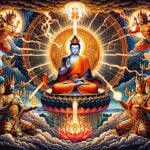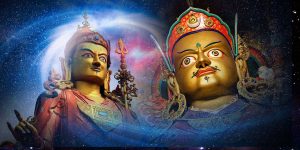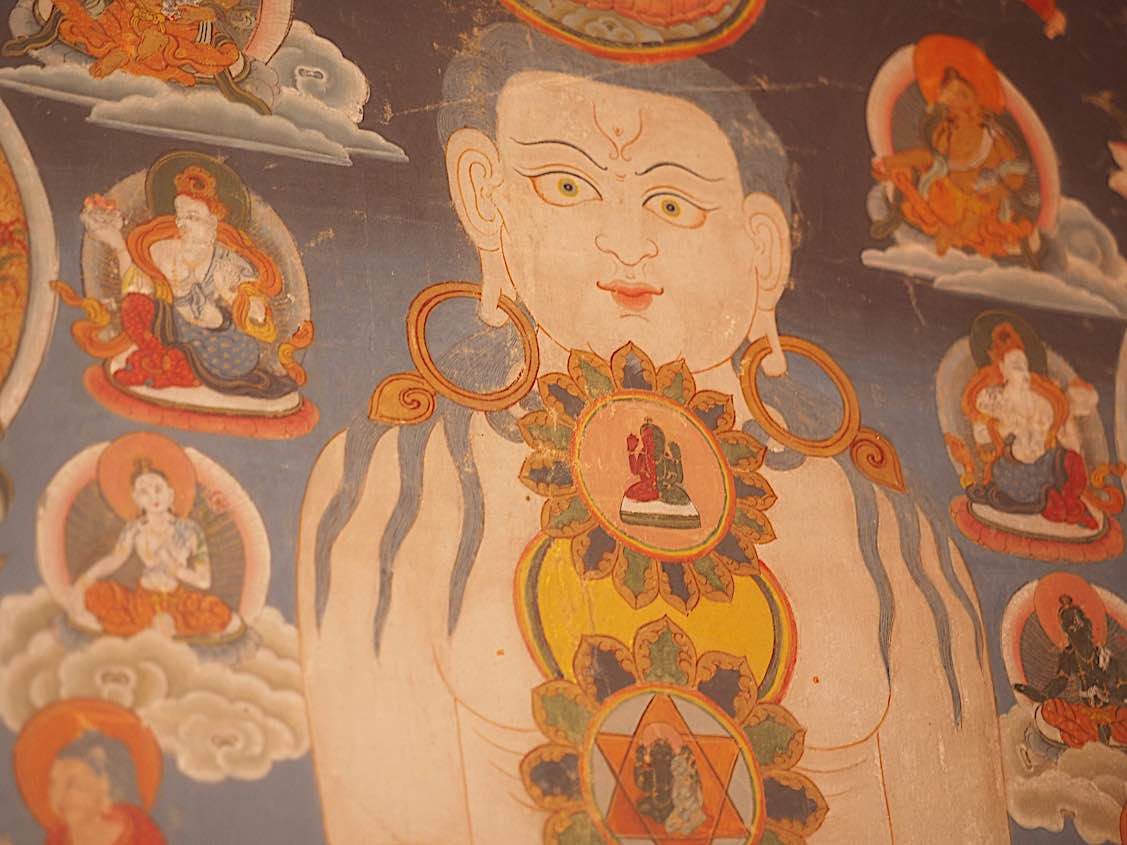An Introduction to the Stages of the Path: Atisha’s “A Lamp for the Path of Enlightenment” and “Foundation of All Good Qualities” by Lama Je Tsong Khapa
An Introduction to the Stages of the Path Teachings
A little over a thousand years ago, a king in Tibet saw the decline of Buddhism in his homeland and decided to invite a great scholar from India, by the name of Atisha, to his country. When Atisha arrived in Tibet, he saw that people were practicing advanced teachings without a foundation in ethics; that different schools of thought were critical of each other, each believing that they alone had the truth; he saw how tantra was being misunderstood and misused, and how some teachings that were popular at the time were not in line with what the Buddha and the realized sages that followed him had taught.
A Feature by
Jason Espada
Out of his compassion and wisdom, Atisha met the Tibetans right where they were. He taught them the fundamental practice of taking refuge so often that he came to be called by some ‘the refuge lama’, and when asked for a simple teaching that people could easily understand, Atisha composed a text he called ‘A Lamp for the Path to Enlightenment’. This was the prototype of what has come to be known as the Lam Rim or the Stages of the Path teachings.
- Editor’s Note: Jason Espada assembled an amazing PDF — The Stages of the Path Teachings A Selection of Texts Jason Espada, editor — with several important Lamrim texts and introductions available for download here>>
The entire path from beginning to end
This genre shows us the entire path at once, from beginning to end. It’s like having a map for the entire journey. It starts from where we are, saying upfront that we all have Buddha Nature, which is the potential for enlightenment; and that we now have this precious human life, which is subject to birth and death, and difficult emotions, such as loneliness, fear, and depression; it introduces the Three Jewels, the Buddha, Dharma and Sangha, refuge and ethics, and a basic practice of meditation, and then proceeds to teachings on liberation, great compassion, and enlightenment.
It shows the function of all the different Buddhist teachings, how they reinforce each other, and how they are without contradiction.

- NOTE: Event notice: Lamrim Retreat via Zoom (online) November 29 – December 13, 2020. Details on the online Lamrim Retreat personally taught by the Venerable Zasep Rinpoche November 29 to December 13, 2020, visit Gaden for the West events page>>
The remedy of Atisha’s lamp
I think we are in a similar situation here as Atisha found when he went to Tibet. There is such an array of teachings in the 21st century, and people often pick and choose from whatever is at hand. Sometimes the practices work for them, and often not. As in Atisha’s time, there are made up teachings being sold, that have no basis in Buddhism; there is sectarian arrogance, close-mindedness, and what are only partial paths being taught – and all this at a time when there is so much suffering, and when our world and our people are in crisis.
Just as in Atisha’s time, I see that people are practicing sitting meditation, but without much guidance; I hear about ideals of universal love and compassion, without the steps laid out; we hear about basic ethics disregarded, even by teachers, let alone their students; and the Buddhist wisdom teachings pushed to the side, or else not understood. The Lam Rim is a remedy for all that.
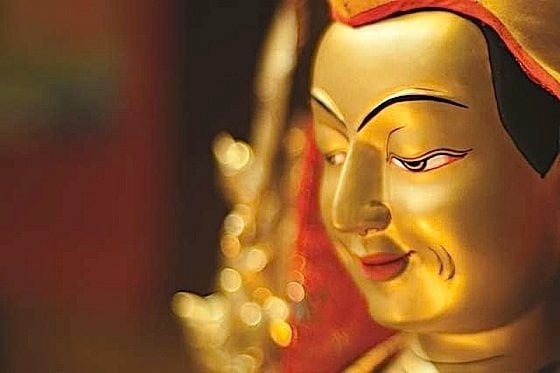
Light, energy and inspiration of Lama Je Tsong Khapa
It’s said in this tradition, that in each generation, the children will be richer than their parents — meaning that the main points of the teachings have become easier to see.
We now have the light, energy, and inspiration of teachers such as Gampopa and Je Tsong Khapa to guide us. Realized practitioners such as the Dalai Lama and Lama Zopa Rinpoche have given commentaries on their teachings, and these are widely available.
What are called ‘root texts’ are summaries of teachings, that traditionally have been celebrated, memorized, and commented on by teachers. Back before there were many books, this was the easiest way to store and transmit ideas. In successive generations, even commentaries were put to memory, debated, added to, and passed down, and we are heirs to all these teachings. Root texts and commentaries, as well as our own reflections and insights, complement each other. We read and study, listen to teachings, and practice whatever we need, the step that is right in front of us. Then when we return to the original outline, the meaning is all there for us.
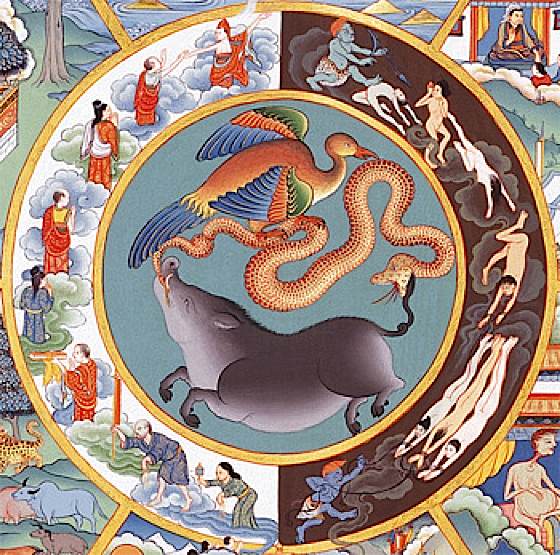
Everything arises from causes
One of the basic ideas in the Stages of the Path is that everything rises from causes- including the decision to take up a spiritual path, to follow a teacher, to keep good ethics, to seek liberation, or enlightenment as the best way to help others. This idea- of watering the roots of the kind of life we want for ourselves proves itself again and again.
The Stages of the Path teachings help us to begin our spiritual practice; and once we’ve started, they help us to continue, with clarity and vigor; and they lead to the fulfillment of accomplishing the teachings for ourselves and all others.
Whenever I’m lacking motivation, or when I’m unsure of what to practice, I rely on these teachings. They are greatly empowering, and they clarify what is most important for me at any time. I also try to remember that people study the Lam Rim their whole lives, and are enriched by it, and so I take the long view.
Now, personally, I don’t think it’s important whether people ally themselves with one Buddhist tradition or lineage or another. What matters to me is that they have an understanding of teachings that can help them throughout their lives, free them from confusion and suffering, and enable them to benefit others in every needful way. We learn so many useless things over the course of our lives, that at least this much should be known.
May we all find a complete path that works for us,
and leads us to freedom from samsara,
the endless round
May we then share the benefits of our practice
with all of our precious children,
with our family and friends,
with animals, and with all beings
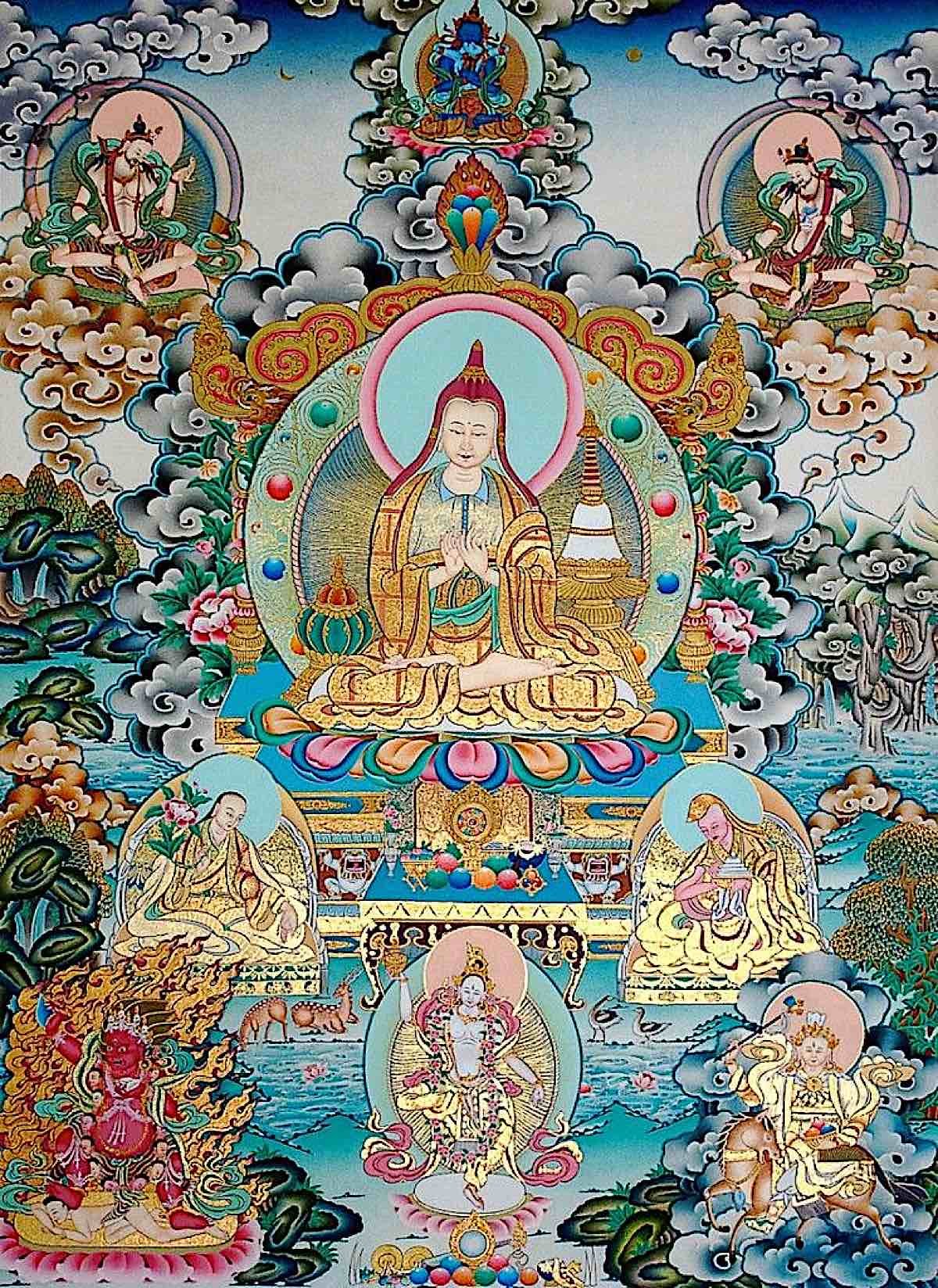
Practice in Stages, by Geshe Acharya Thubten Loden
-
From The Path to Enlightenment in Tibetan Buddhism
Practice in Stages. While meditating on the lower subjects, the aspirations for higher subjects should be strengthened. While listening to the teachings on the higher subjects, your intention to practice the lower ones should also be strengthened. If it goes like this, you are practicing properly. On the other hand, if, while listening to higher teachings, your interest in the lower ones wanes, you will end up practicing in a vacuum, with no proper basis or support.
If your guru devotion weakens, resort strongly to reflecting on the benefits of guru devotion, and generate a clear view of how it is the root of the path. If your aspiration for the Dharma weakens, you must focus on the aspects of leisure and fortune to discern clearly the purpose and real value of your life.
If you succumb to strong attachment to the allurements of the pleasures of this life, focus your attention on impermanence to dispel this attitude. Becoming neglectful of your vows indicates indifference to the results of actions, so direct yourself to the study of karma.
If your revulsion toward cyclic existence is weak, discussing liberation is mere words. You must reflect again and again on the disadvantages of cyclic existence.
If you lack a strong compulsion to benefit others, you have severed the root of the Mahayana, so you must direct yourself to the contemplation of bodhicitta and its basis – great compassion.
If, having taken the bodhisattva vows and engaged in the Perfections, you find that your mind strongly adheres to appearances as real, you must direct your attention to contemplating space-like emptiness, and see all that appears as like an illusion. Focus on the non-dual nature of appearances and emptiness.
If your mind continues to wander uncontrollably from the virtuous object of meditation and remains a slave to the objects of the senses, emphasize calm abiding to bring it under control.
Take each subject from guru devotion to special insight and make it your meditation object for a week at a time. Then start over once more at the beginning and repeat the cycle again and again. In this way you will progressively deepen your understanding of each subject, while, at the same time, keep the whole path in mind.
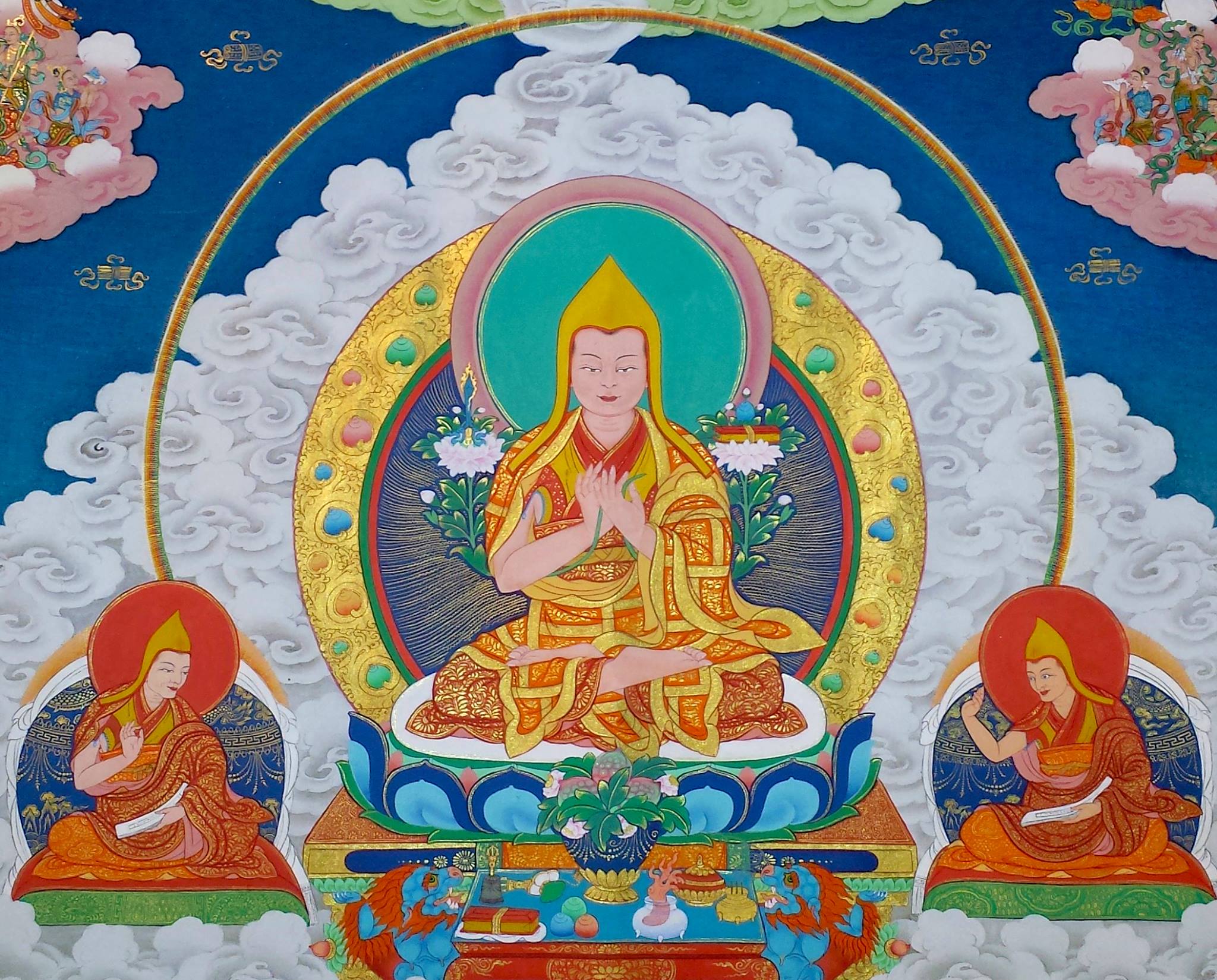
The Foundation of All Good Qualities, by Tsong Khapa
The foundation of all good qualities is the kind and venerable guru. Correctly devoting to him is the root of the path. By clearly seeing this and applying great effort, May I rely upon him with great respect.
By understanding that the precious freedom of this rebirth is found only once, is greatly meaningful and difficult to find again, May I generate the mind that unceasingly, day and night, takes hold of its essence.
This life is as impermanent as a water bubble – how quickly it decays and death comes! And after death, just like a shadow follows the body, the results of black and white karma follow.
Finding firm and definite conviction in this, May I always be careful to abandon even the slightest negativities and accomplish all virtuous deeds.
Seeking samsaric pleasures is the door to all suffering. They are uncertain and cannot be relied on. Recognizing these shortcomings, May I generate the strong wish for the bliss of liberation.
Led by this pure thought, mindfulness, alertness and great caution arise. The root of the teachings is keeping the pratimoksha (individual liberation) vows. May I accomplish this essential practice.
Just as I have fallen into the sea of samsara, so too have all mother migratory beings. May I see this, train in supreme bodhicitta, and bear the responsibility of freeing migratory beings.
By clearly recognizing that developing bodhicitta, without practicing the three types of morality1, I will not achieve enlightenment, May I practice the bodhisattva vows with great energy.
By pacifying distractions to wrong objects, and correctly analyzing the meaning of reality, May I generate quickly within my mindstream the unified path of calm abiding and special insight.
Having become a pure vessel by training in the general path, May I enter the holy gateway of the fortunate ones, the supreme vajra vehicle.
At that time, the basis of accomplishing the two attainments is keeping pure vows and samaya. Having become firmly convinced of this, May I protect these vows and pledges like my life.
Then, having realized the importance of the two stages, which are the essence of the vajrayana, by practicing with great energy, never giving up the four sessions, May I realize the teachings of the holy guru.
Like that, may the virtuous teachers who show the noble path, and the spiritual friends who practice it have long lives. May I pacify completely all outer and inner hindrances.
In all my rebirths, never separated from perfect gurus, May I enjoy the magnificent Dharma. By completing the qualities of the stages and paths, May I quickly attain the state of Vajradhara.
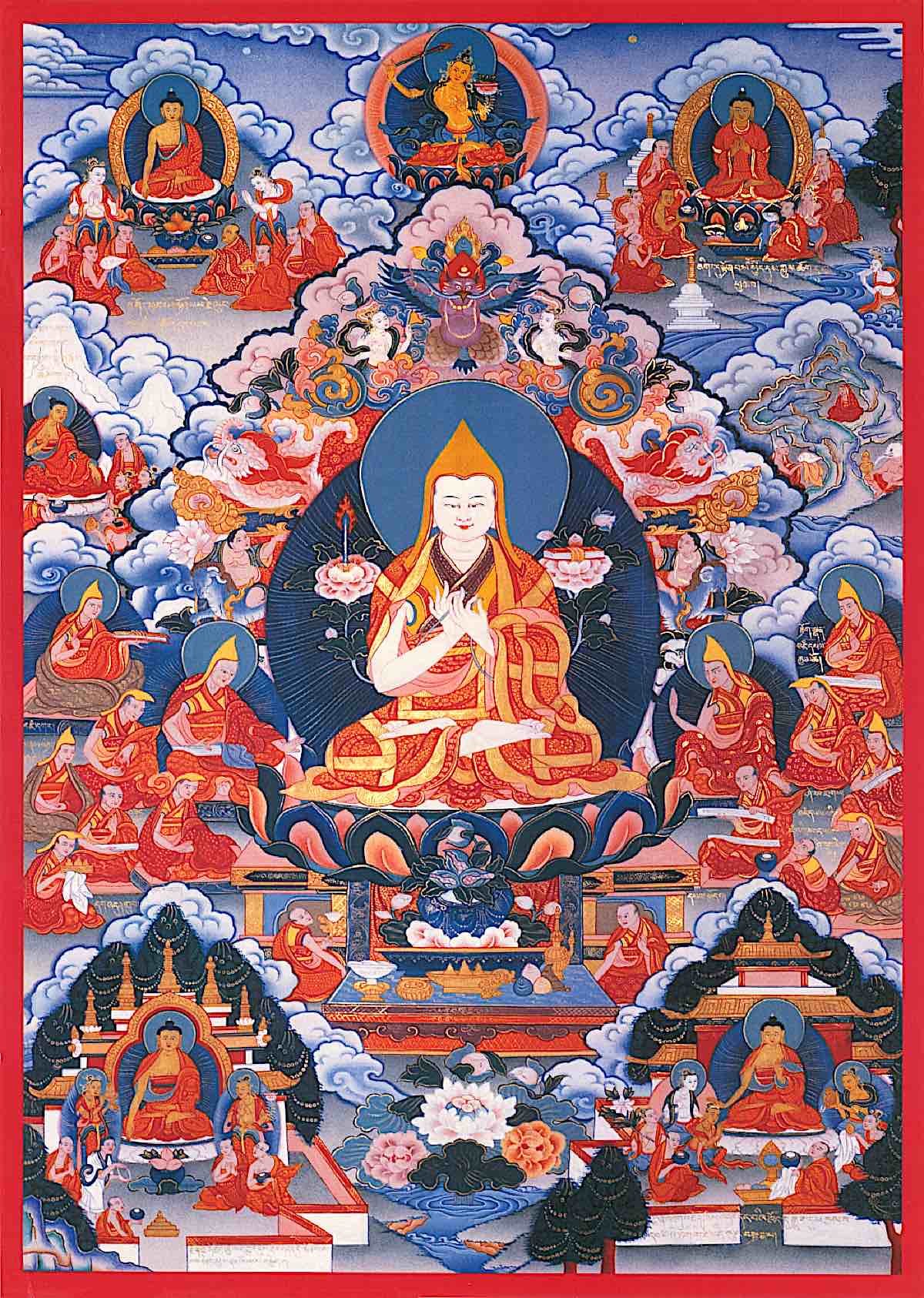
Event Notice: Lamrim Zoom retreat
From the website: “Gaden for the West is pleased to announce a two-week Lam Rim Retreat with Zasep Tulku Rinpoche (November 29th – December 13th) on Zoom. The
What is Lamrim?
The lamrim (“graduated path”) is a textual tradition that organizes Shakyamuni Buddha’s teachings into a complete step-by-step path to enlightenment.
Contact Debra Madsen to register.”
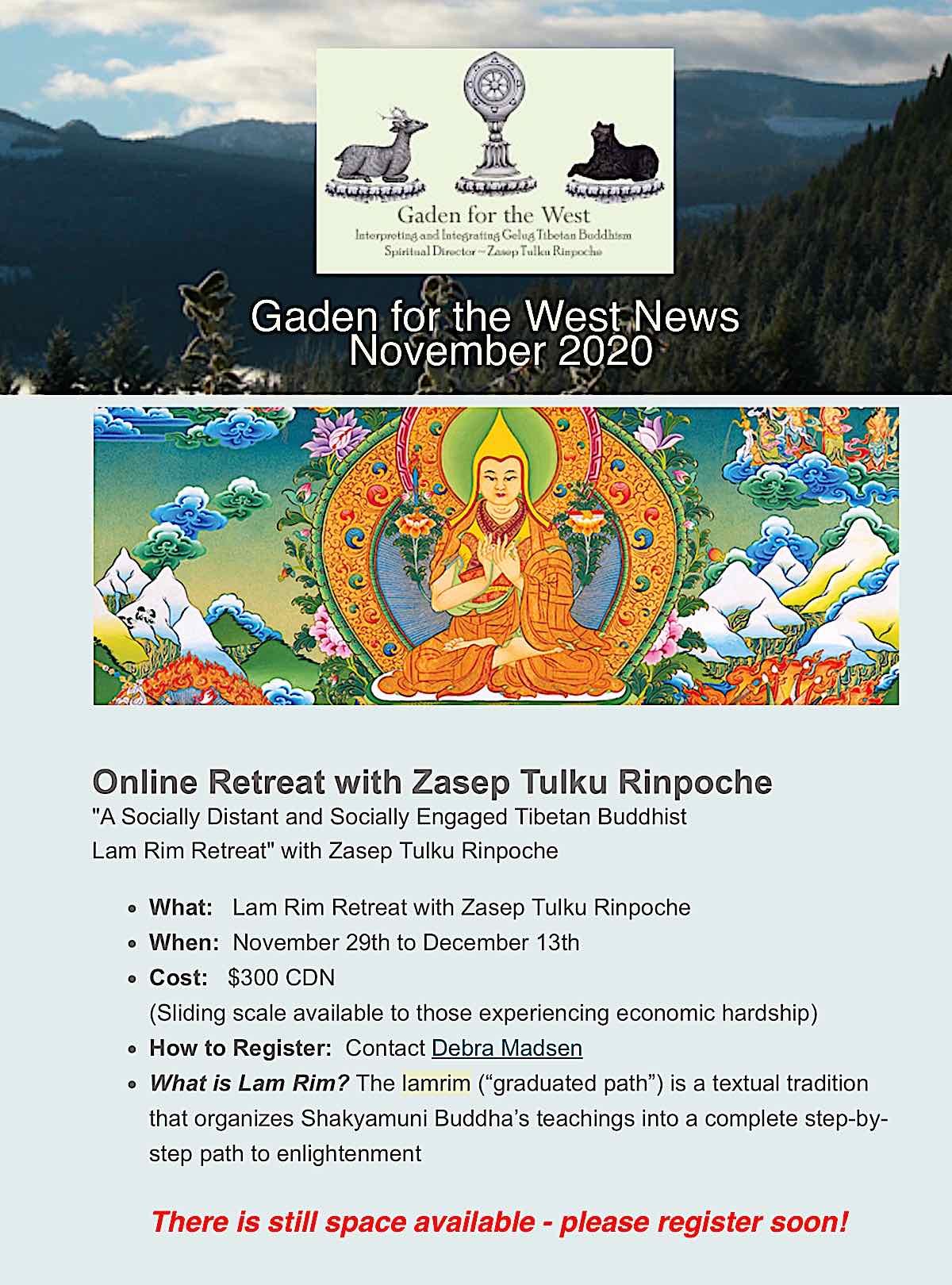
More articles by this author
Search
Latest Features
Please support the "Spread the Dharma" mission as one of our heroic Dharma Supporting Members, or with a one-time donation.
Please Help Support the “Spread the Dharma” Mission!

Be a part of the noble mission as a supporting member or a patron, or a volunteer contributor of content.
The power of Dharma to help sentient beings, in part, lies in ensuring access to Buddha’s precious Dharma — the mission of Buddha Weekly. We can’t do it without you!
A non-profit association since 2007, Buddha Weekly published many feature articles, videos, and, podcasts. Please consider supporting the mission to preserve and “Spread the Dharma." Your support as either a patron or a supporting member helps defray the high costs of producing quality Dharma content. Thank you! Learn more here, or become one of our super karma heroes on Patreon.
Jason Espada
Author | Buddha Weekly
Jason Espada is a writer and classical musician living in San Francisco; a steward of his father’s photography, and the founder of A Buddhist Library: http://www.abuddhistlibrary.com. Over the years, he’s made a number of recordings of Buddhist teachings. These days his focus is on the natural connection between spirituality and social action. His new website is at JasonEspada.com.




